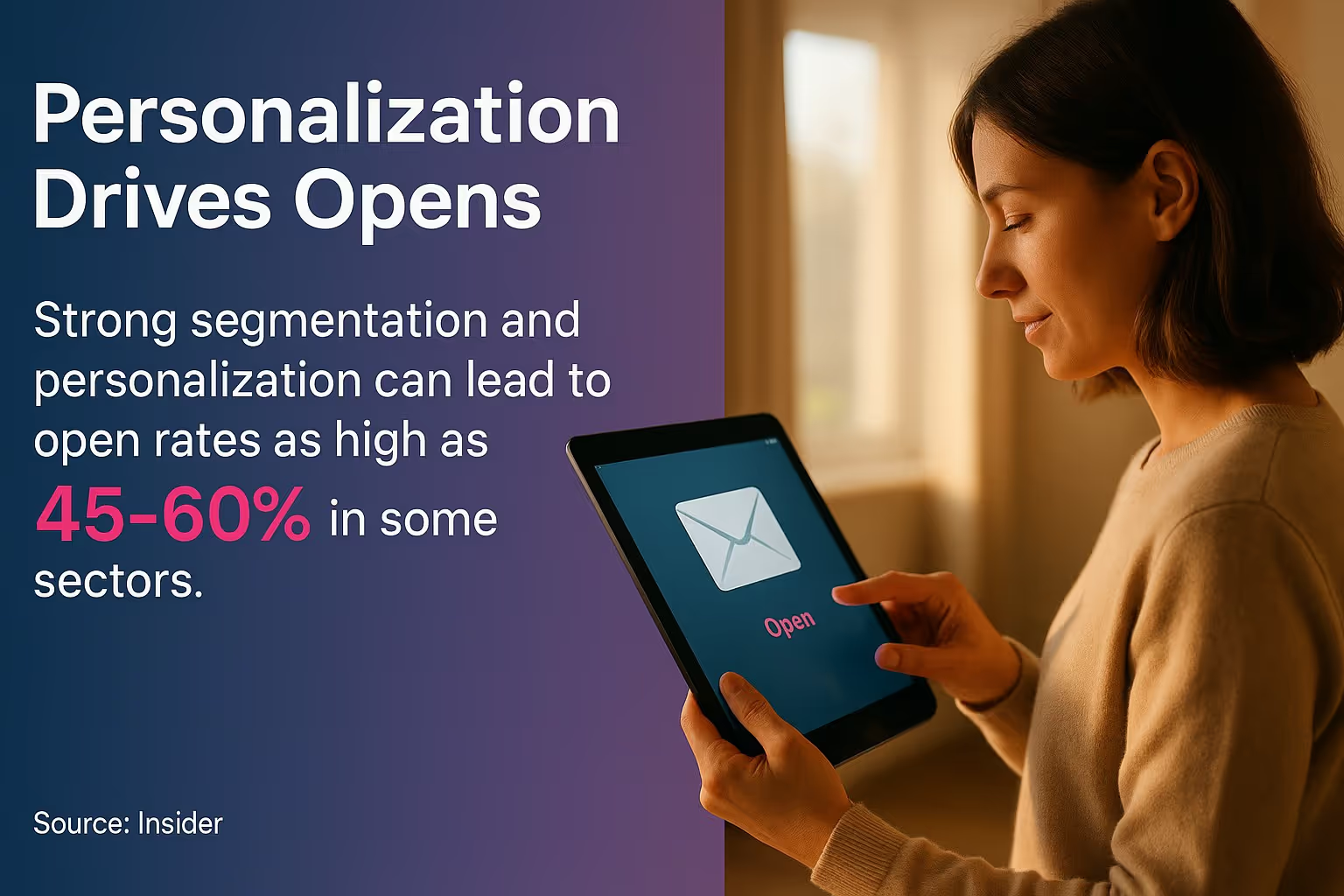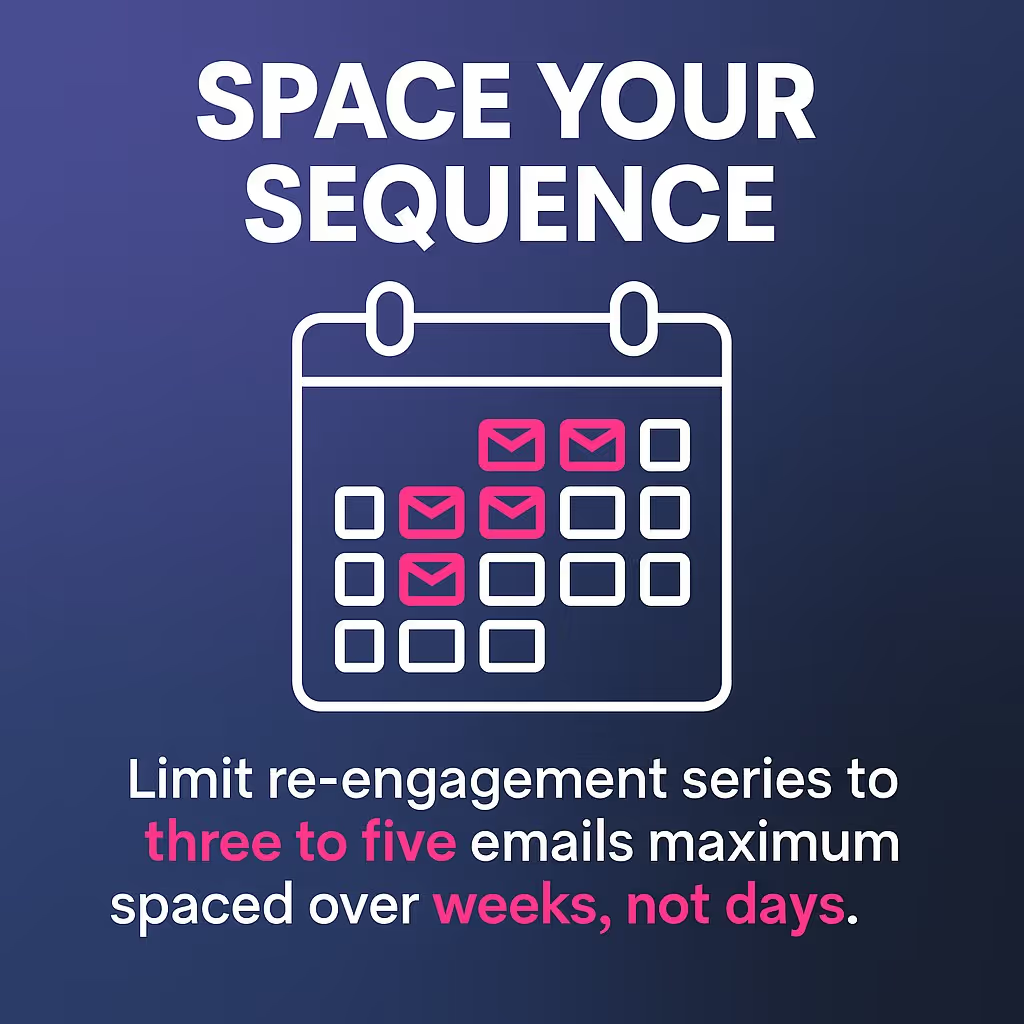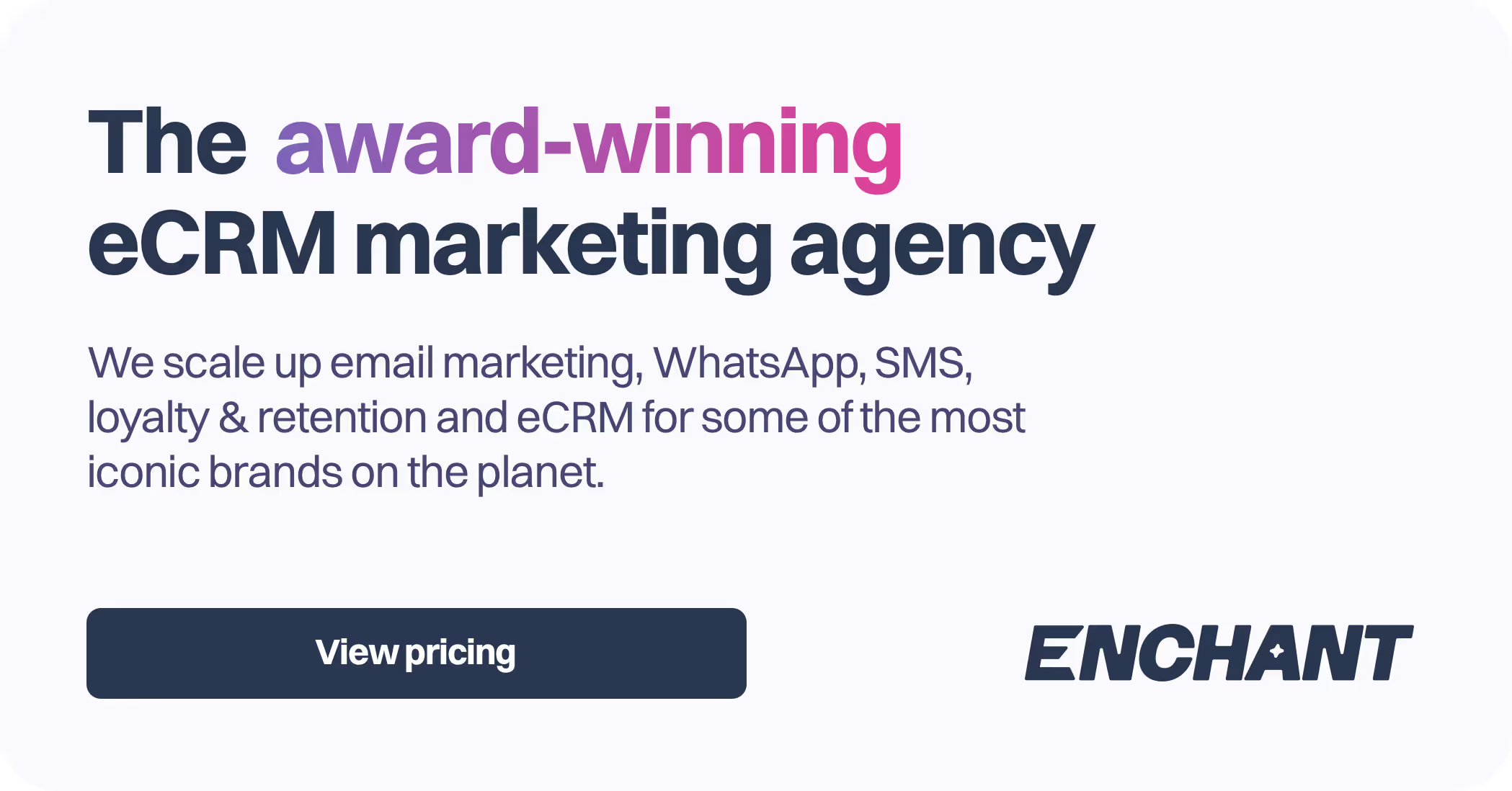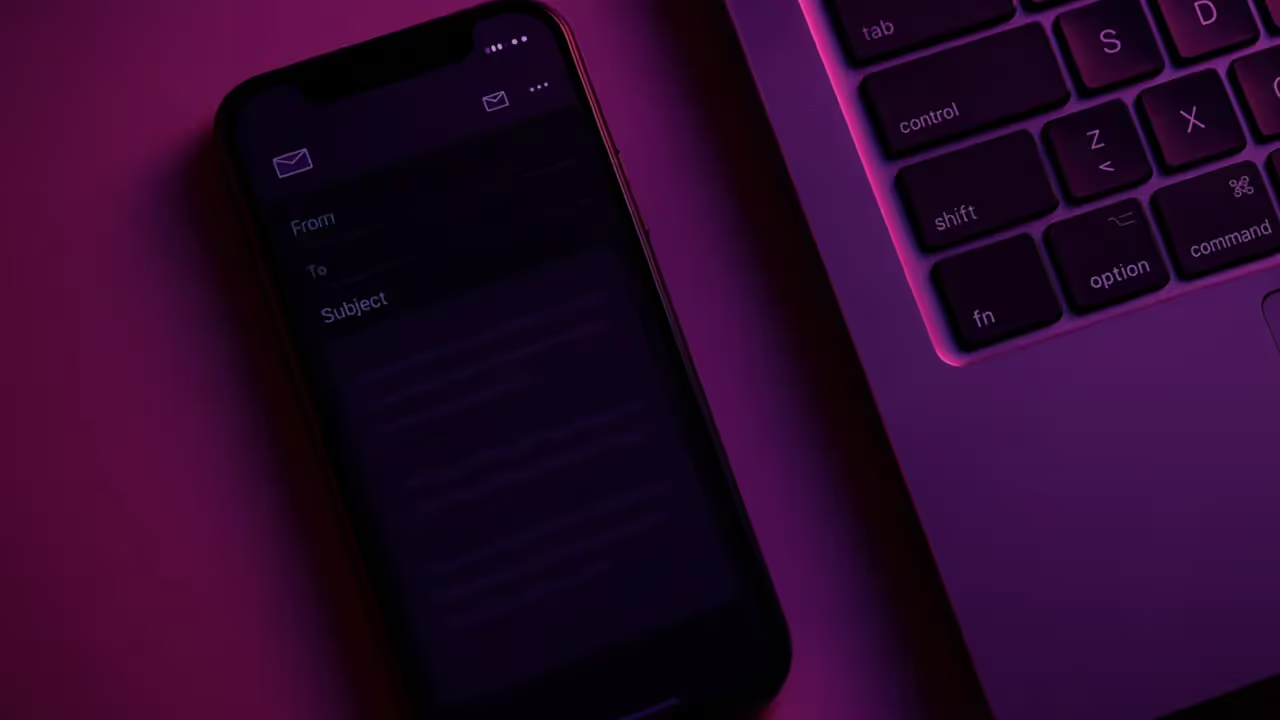How to Re-Engage Email Subscribers with Proven Tips
Your email list has gone quiet. Open rates dropped. Click-throughs vanished. Here's what works to wake them up.
Start by segmenting your list to identify inactive subscribers and tailoring your outreach with personalized content. This isn't about sending more emails. It's about sending smarter ones.
The difference between ignored emails and engagement comes down to three core strategies. First, understand why subscribers tuned out. Second, create content that addresses their specific reasons for disengaging. Third, make it easy for them to care again.
Most businesses treat inactive subscribers like a lost cause. They're not. They gave you their email address for a reason. Your job is to remind them why they should open your messages.
This guide shows you how to identify inactive subscribers, craft campaigns that work, and build systems that prevent future drop-offs. You'll learn what to send, when to send it, and how to measure success without guessing.
Identifying Who Needs Re-Engagement
Before sending a single email, know who you're trying to reach. Not all inactive subscribers are the same.
Start by defining "inactive" for your business. Some companies mark subscribers inactive after 90 days without engagement. Others wait six months. Your timeline depends on your typical sending frequency.
Segment by Engagement Patterns
Break your inactive list into clear groups. Create segments for subscribers who stopped opening emails, those who open but never click, and people who haven't engaged in specific timeframes.
Look at their last interaction date. Check which types of emails they previously opened. Note any patterns in subject lines or content themes that worked.
Use your email platform's analytics to flag subscribers who haven't opened emails in 60, 90, or 120 days. Tag them accordingly.
Understand Disengagement Triggers
Common reasons subscribers go quiet include email frequency that's too high, content that shifted away from their interests, or life changes that made your offerings less relevant.
Review your sending patterns during the period when engagement dropped. Did you increase frequency? Change your content focus? Launch new product campaigns?
Survey a small segment asking why they stopped engaging. Offer a quick one-question poll. Most won't respond, but the few who do provide valuable insights.
Check unsubscribe feedback if your platform collects it. This data reveals what drove people away and helps prevent similar issues with inactive subscribers.
Creating Content That Re-Captures Attention
Now that you know who to target, craft messages that cut through inbox noise. Generic "We miss you" emails rarely work.
Your re-engagement content needs a clear value proposition. Give subscribers a specific reason to care right now.
Lead with Personalization and Value
Industry benchmarks show that strong segmentation and personalization can lead to open rates as high as 45–60% in some sectors. Apply this by referencing their past behavior or preferences.

Mention products they browsed or content categories they engaged with previously. Use their purchase history if applicable. Reference their sign-up source or the lead magnet they downloaded.
Write subject lines that acknowledge the gap. Try "Still interested in [topic they cared about]?" or "Quick question about your [specific interest]."
Keep the message focused on one clear offer or action. Don't overwhelm returning subscribers with everything you've done since they last opened.
Offer Incentives That Matter
Offering discounts or exclusive deals is an effective way to re-engage inactive subscribers. But incentives go beyond price cuts.

Consider exclusive content access, early product launches, or VIP community membership. Match the incentive to what originally attracted them to your list.
For e-commerce subscribers, try a discount code with urgency. For B2B audiences, offer a free tool or template. For content-focused lists, provide premium articles or guides.
Test different incentive types across segments. Track which motivators drive opens versus clicks versus conversions.
Add Interactive Elements
Interactive elements such as polls, surveys, or simple games can further boost engagement and make emails more memorable. These work especially well for re-engagement.

Include a quick preference poll letting subscribers update their interests. Add a "click to choose your content frequency" option. Use countdown timers for limited offers.
Try gamification with scratch-off discount reveals or spin-to-win promotions. These create curiosity and encourage interaction even from disengaged subscribers.
Keep interactive elements simple and mobile-friendly. Complex interactions increase load times and frustrate users.
Building Your Re-Engagement Campaign Sequence
Single emails rarely bring subscribers back. Plan a sequence that gradually increases urgency and value.
Design a three-to-five email series spaced over two to three weeks. Each message should build on the previous one.

Email One: The Value Reminder
Start by reminding subscribers what they signed up for. Reference the original value proposition without sounding desperate.
Use subject lines like "Here's what you've been missing" or "Quick check: Are these topics still relevant?" Lead with your best recent content or offerings.
Include clear navigation to preference centers. Make it easy for subscribers to update interests rather than unsubscribe completely.
Set this email to send to all inactive segments. Track opens to identify who's still reachable.
Email Two: The Special Offer
Send this three to five days after the first email, targeting those who didn't open or didn't click. Now introduce your incentive.
Make the offer exclusive to returning subscribers. Use language like "Because we value you" or "A special thank-you for sticking with us."
Set a deadline for the offer. Create urgency without being pushy. A seven-day window works well.
Link directly to the most relevant landing page. Don't make subscribers hunt for the offer.
Email Three: The Direct Question
This email asks subscribers to make a choice. Send it one week after the second email to remaining non-responders.
Subject lines should be direct: "Should we keep sending?" or "One quick question." The body copy asks if they want to stay subscribed.
Offer three clear options: stay subscribed with current preferences, update email frequency, or unsubscribe. Make each option a single-click choice.
This email serves two purposes. It cleans your list and identifies subscribers who still want to hear from you.
Email Four: The Last Chance
Send this final email three to five days after email three. Target only those who haven't responded to any previous messages.
Use clear language about removal: "This is our last email" or "Final notice before we say goodbye." Be respectful but direct.
Offer one last compelling reason to stay. Could be your best incentive, most popular resource, or a simple "We'd love to have you back."
After this email, remove non-responders from your active list. Keep them in a separate segment for potential future campaigns, but stop regular sends.
Setting Up Automated Re-Engagement Workflows
Manual re-engagement campaigns work, but automation makes them sustainable. Build systems that catch subscribers before they fully disengage.
Use tools like Mailchimp, Klaviyo, or ActiveCampaign to create triggered workflows based on engagement signals.
Create Engagement-Based Triggers
Set up automation rules that monitor subscriber behavior. When someone hasn't opened emails in 60 days, automatically add them to a re-engagement workflow.
Build triggers for different engagement levels. Create one workflow for subscribers who open but don't click. Design another for those who stopped opening entirely.
Use triggered email strategies to send timely messages based on specific actions or inactions.
Test trigger timing. Some audiences respond better to 30-day inactivity windows. Others need 90 days before re-engagement makes sense.
Implement Behavior-Based Sequences
Connect your re-engagement workflows to subscriber actions. If someone clicks a re-engagement email, move them to a nurture sequence immediately.
Tag subscribers based on which re-engagement email they responded to. This reveals what motivators work for different segments.
Set up email drip campaigns that continue nurturing re-engaged subscribers with relevant content.
Use conditional logic in your workflows. If a subscriber updates preferences, route them to content matching their new interests.
Monitor and Adjust Automatically
Build feedback loops into your automation. Track which workflow paths produce the best re-engagement rates.
Set up A/B tests within automated sequences. Test subject lines, send times, and offer types automatically across segments.
Create alerts when re-engagement rates drop below benchmarks. This signals when your workflows need updating.
Review automation performance monthly. Look for patterns in which triggers work and which messages get ignored.
Measuring Re-Engagement Success
Track the right metrics to understand what's working. Re-engagement success goes beyond open rates.
Focus on four key performance indicators that reveal true campaign effectiveness.
Response Metrics to Track
MetricWhat It MeasuresTarget BenchmarkReactivation RatePercentage of inactive subscribers who engage again15-25% of targeted segmentCampaign Open RateOpens across full re-engagement sequenceHigher than regular campaignsClick-Through RateClicks on links within re-engagement emails5-10% of opensConversion RateSubscribers who complete desired actionVaries by goal

Calculate your reactivation rate by dividing engaged subscribers by total inactive subscribers targeted. This number shows campaign effectiveness at a glance.
Compare re-engagement open rates to your standard campaign averages. If re-engagement emails perform worse, your messaging or timing needs work.
Long-Term Engagement Indicators
Don't just measure immediate responses. Track whether re-engaged subscribers stay active after your campaign ends.
Monitor 30-day and 90-day engagement rates for subscribers who responded to re-engagement efforts. Do they continue opening emails?
Check purchase behavior for e-commerce lists. Compare revenue from re-engaged subscribers versus continuously active ones.
Review list health metrics including complaint rates and unsubscribe rates during and after campaigns. High complaints signal messaging problems.
Cost-Effectiveness Analysis
Calculate the cost per re-engaged subscriber. Include time spent creating campaigns, automation setup, and any incentive costs.
Compare this cost to acquiring new subscribers. Re-engagement typically costs less than new subscriber acquisition.
Measure lifetime value of re-engaged subscribers. Track their purchases, engagement duration, and referral activity over six months.
Use these insights to justify ongoing re-engagement investments and optimize budget allocation.
Preventing Future Disengagement
Re-engagement works, but prevention works better. Build systems that keep subscribers active from the start.
Apply lessons from re-engagement campaigns to improve your regular email strategy.
Optimize Your Welcome Series
Strong onboarding prevents disengagement. Use your email marketing customer lifecycle mapping to create welcome sequences that set clear expectations.
Tell new subscribers exactly what they'll receive and how often. Show examples of your best content in the first three emails.
Ask for preference updates early. Let subscribers customize their experience before they get frustrated with irrelevant content.
Set the tone for your brand voice immediately. Consistency between welcome emails and regular sends prevents surprises.
Maintain Sending Consistency
Erratic sending patterns confuse subscribers. Establish a predictable schedule and stick to it.
If you email weekly, send every week. If monthly, hit the same week each month. Consistency builds habit and expectation.
Avoid sudden frequency changes. When you need to send more or less often, tell subscribers in advance.
Use email marketing automation to maintain consistency even during busy periods.
Regularly Refresh Content Strategy
Monitor engagement trends across your entire list. When open rates decline, content might be getting stale.
Survey active subscribers about content preferences quarterly. Ask what topics they want more or less of.
Test new content formats regularly. Try video, infographics, interactive elements, or different article lengths.
Review your email engagement strategies and implement fresh approaches every quarter.
Clean Your List Proactively
Don't wait for deliverability problems. Remove completely unengaged subscribers before they hurt your sender reputation.
Set a hard cutoff for removal, typically six to twelve months of zero engagement. Run final re-engagement attempts before deletion.
Keep removed subscribers in a separate database. You might find relevant reasons to reach out later with entirely new campaigns.
Monitor list growth versus churn rates. Healthy lists balance acquisition with natural attrition.
Tools That Simplify Re-Engagement
The right tools make re-engagement campaigns manageable at scale. Choose platforms that support automation and segmentation.
Email Service Provider Features
Look for platforms with built-in re-engagement tools. Klaviyo offers advanced segmentation based on engagement scoring.
ActiveCampaign provides detailed automation builders perfect for complex re-engagement sequences.
Mailchimp includes simple re-engagement templates for businesses just starting out.
Evaluate email service providers based on segmentation capabilities, automation flexibility, and reporting depth. Check out top email sequence software options for detailed comparisons.
Analytics and Tracking Tools
Use Google Analytics to track post-click behavior from re-engagement campaigns. Set up specific goals for re-engaged traffic.
Implement UTM parameters on all re-engagement email links. This separates re-engagement performance from regular campaign data.
Consider heat mapping tools like Hotjar to understand how re-engaged subscribers interact with landing pages.
Connect your email platform to your CRM for complete subscriber journey tracking. This reveals long-term value of re-engagement efforts.
Testing and Optimization Platforms
Use your email platform's native A/B testing for subject lines and content variations. Test one variable at a time for clear results.
Try multivariate testing tools for complex campaigns with multiple elements to optimize. These work best after you've identified which variables matter most.
Implement send-time optimization features available in platforms like Salesforce Marketing Cloud. These automatically send emails when individual subscribers are most likely to engage.
Track testing results in a centralized spreadsheet. Document what worked and what didn't for future campaigns.
Common Re-Engagement Mistakes to Avoid
Even well-planned campaigns fail when you make these errors. Learn from common pitfalls.
Sending Too Many Re-Engagement Emails
Bombarding inactive subscribers with daily "We miss you" messages pushes them toward unsubscribe. Space your sequence over weeks, not days.
Limit re-engagement series to three to five emails maximum. After that, either they're interested or they're not.
Avoid running multiple re-engagement campaigns simultaneously. One subscriber shouldn't receive re-engagement emails and regular promotions at the same time.
Using Generic Messaging
Templates that say "We miss you!" without personalization get ignored. Reference specific subscriber data in every re-engagement email.
Avoid vague value propositions. Instead of "Great content awaits," specify "Your weekly marketing tips are waiting."
Don't copy competitors' re-engagement strategies verbatim. What works for their audience might not work for yours.
Ignoring Mobile Optimization
Most subscribers check email on phones. Re-engagement emails must render perfectly on small screens.
Test all emails on multiple devices before sending. Check that buttons are thumb-friendly and text is readable without zooming.
Keep subject lines under 40 characters for mobile preview panes. Longer subjects get cut off.
Forgetting to Remove Non-Responders
Continuing to email completely unengaged subscribers damages deliverability. After your final re-engagement email, remove non-responders.
Holding onto dead email addresses hurts sender reputation. Email providers notice when large portions of your list never engage.
Set calendar reminders to clean your list quarterly. Make list hygiene a regular maintenance task.

Advanced Re-Engagement Strategies
Once you've mastered basic re-engagement, try these advanced approaches for even better results.
Implement Sunset Policies
Create formal policies defining when subscribers move to inactive status and when they get removed entirely. Document these rules and follow them consistently.
Communicate your sunset policy transparently. Tell subscribers in your welcome series that inactivity leads to removal after a specific timeframe.
Offer multiple chances to stay subscribed before final removal. Send clear warnings at 60 days, 90 days, and 120 days of inactivity.
Make resubscribing easy for removed contacts who change their minds. Keep a reactivation landing page accessible.
Use Channel Diversification
Don't limit re-engagement to email alone. Try reaching inactive subscribers through other channels they use.
Retarget disengaged email subscribers with social media ads. Use custom audiences based on email list segments.
Send direct mail to high-value inactive subscribers. Physical touchpoints sometimes break through digital fatigue.
Try SMS for subscribers who've shared phone numbers. Keep messages brief and include clear opt-out instructions.
Create Winback Landing Pages
Build dedicated landing pages for re-engagement campaigns. These pages should focus solely on reactivation offers.
Include social proof from active subscribers. Show testimonials about what they love about your emails.
Offer preference center access directly on winback pages. Let subscribers customize their experience immediately.
Test different landing page designs and copy. Small changes in headlines or button placement can significantly impact reactivation rates.
Re-Engage Smarter, Not Harder
Inactive subscribers represent potential, not failure. They gave you permission to reach them once. Your job is earning that permission again.
Start with clear segmentation. Know exactly who stopped engaging and when. Build sequences that offer real value, not just "We miss you" messages.
Automate your re-engagement workflows. Manual campaigns work for one-time cleanups. Automation prevents disengagement from becoming chronic.
Test everything. Subject lines, send times, incentives, and messaging all impact results. Track what works for your specific audience.
Your next step is simple. Open your email platform. Identify subscribers inactive for 60-plus days. Start your first re-engagement sequence this week.
Build prevention into your regular strategy. Check out proven tactics for re-engaging inactive subscribers and implement one new approach each month.
Every re-engaged subscriber costs less than a new acquisition. Make re-engagement a regular part of your email marketing system.




.svg)
.avif)












